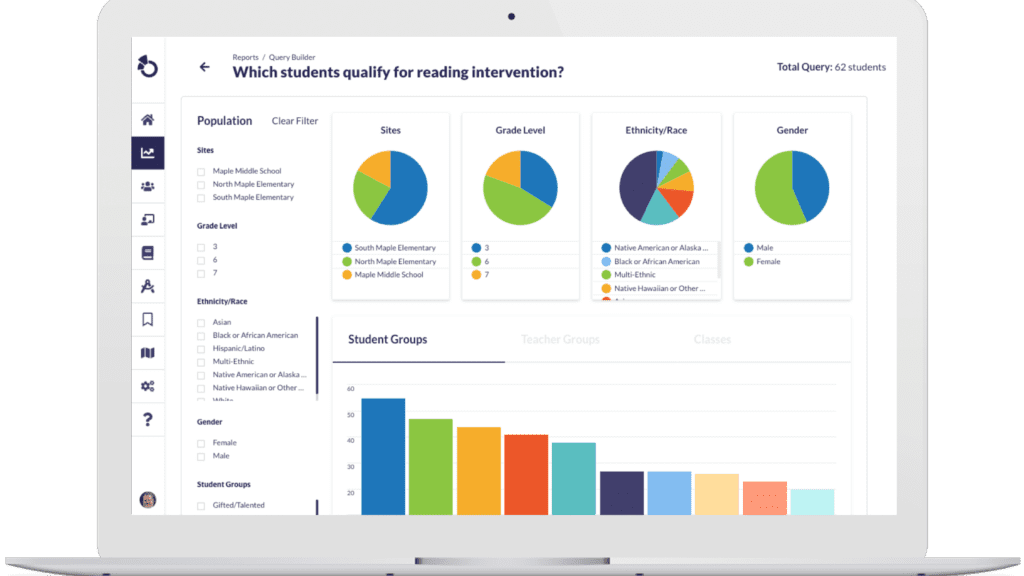Treating Teachers as Tech Leaders: How Districts Can Rebuild Trust After a Transition
By: Millie Boykin
Originally featured in EdTech Digest
When our edtech provider was acquired by a bigger company, my Georgia district was left behind. What we learned has shaped how we evaluate every tool moving forward.
For ten years, our educators were satisfied with the familiar, functional assessment tool we used district-wide. But when the company started growing, our schools fell further down their priority list.
As more support tickets were left neglected and frustrations quickly mounted, teachers began to lose patience in the platform—and the district leaders who advocated for it. A once reliable tool for the school day became such an inconvenience that only 10% of our teachers continued to use it.
Switching out a district-wide platform for a much-needed update wouldn’t be easy, especially when teachers were disillusioned and wary of change. The transition would take more than a new tool to restore their trust. We would need a district team and support partners willing to get their hands dirty.
In only a few months, we were able to seamlessly integrate a new system across our campuses, but just as important, we developed a framework to successfully guide future tech acquisitions.
Don’t Just Listen to Teachers, Solve Their Problems
Undertaking a technology change can be a nightmare if not handled with care. We knew that listening to teachers was a strong first step, but we had to actually take action on their concerns.
The biggest fear teachers voiced was the integration of information into a new system. Educators had ten years of assessments built into the current program, and the mere thought of replicating a decade of work when they already had so much on their plate was overwhelming. That alone could have been enough to halt our progress and stick with the status quo for convenience’s sake.
Instead, we shifted the workload out of the classroom and into the district office. Our administrators rebuilt the teachers’ assessments in the new platform so that by the time educators came in for training, they could focus on learning. Taking on their burden showed our teachers that we were in this together..
Build Teacher Advocates—and Compensate Them for Their Time
We knew we were not getting any new technology off the ground without teacher buy-in. The last thing we wanted was to spend our limited time and budget on a new rollout, only to have it languish at 10% usage again. Cultivating our team of advocates required a minimal upfront investment to curb future frustration and waste.
All educators were encouraged to sign up for training on the new assessment tool over the summer and paid a stipend for every course they completed. By the time the school year began, more than 100 teachers were certified in the platform and ready to support their peers. Educators new to the tool felt comfortable going to these teacher leaders for practical advice.
Not only did the district build internal champions for the new technology, it created new leadership opportunities for our teachers. Administrators were able to identify those educators ready to take on new responsibilities and foster growth opportunities for future Bulloch County School leaders.
Be Transparent and Adjust Expectations
You are never going to find a new system or tool that's exactly like what your educators are used to, and that’s okay. The most important part of any district transition is being upfront with teachers about what will be different, both the good and the bad.
This transparency started when vetting edtech partners. As administrators, we worked closely with our teachers to develop questions that addressed the pedagogical and technical features of every platform we considered. The due diligence empowered us to distinguish between those vendors who were overpromising features and those who were honest about the tech’s capabilities and limitations.
This reciprocal trust enabled us to set realistic expectations for our teachers. I’m always reminding my teachers that we’re continuous learners, and training on a new platform is part of that journey. We approached onboarding with an open mind, focusing on how the features we did have could meet the needs of both teachers and students.
Make the Edtech Providers Work for You
After being abandoned by our previous edtech provider, we refused to settle for less than what we needed to support our teachers. We were emboldened to ask for exactly what we wanted—and ready to walk if the vendor couldn’t deliver.
The responsiveness and proactive support we receive with our new edtech partner have made all the difference. Now it’s rare that we go even ten minutes without a response or a clear next step. Our point person at the company is always paying attention to our district, ironing out wrinkles in our implementation before I even know they exist.
For instance, when she alerted me to a low number of logins at one school, I investigated the cause and discovered that the teachers were having trouble creating specific assessment questions. I escalated the issue back to the company and was provided with an immediate solution. By proactively addressing problems for them, we ensured teachers we were on their side. They now come to us with any concerns, and we work together to resolve them.
A year later, I can confidently say that the transition was worth the effort. Taking stock of what wasn’t working made me realize we were settling for a product and a company that was no longer serving our district. I just wish we had started sooner. The worst thing administrators can do is to wait until problems escalate before exploring other options.
Making a district-wide tech change doesn’t have to be about finding the perfect tool. This experience showed me that the strongest leadership comes from building teacher trust—and doing whatever it takes to protect it.
Request a demo!
See exactly how Otus can help your school accelerate student growth and improve student outcomes – all while saving educators time.






